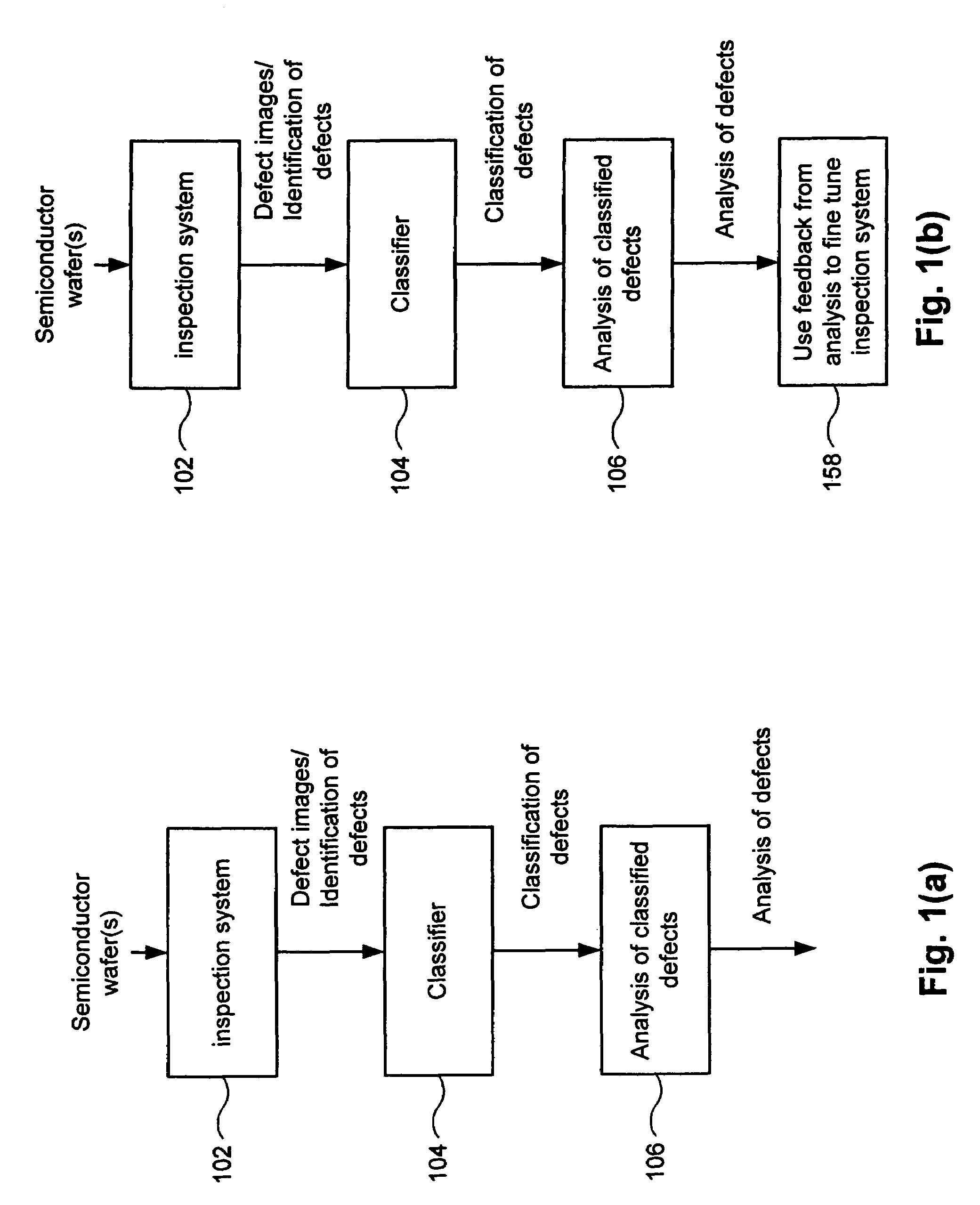Power assisted automatic supervised classifier creation tool for semiconductor defects
a technology of automatic supervision and classifier, applied in the field of software programs, can solve the problems of increasing production cost, affecting yield, and taking many hours
- Summary
- Abstract
- Description
- Claims
- Application Information
AI Technical Summary
Benefits of technology
Problems solved by technology
Method used
Image
Examples
Embodiment Construction
[0034]The described embodiments of the present invention aid a user in classifying defect images input to the system from an outside source. For example, the images can be received from a scanning electron microscope (SEM), a defect inspection system, such as KLA-Tencor's 2132 inspection tool, or any similar instrument used to generate images and detect errors therein. In certain embodiments, the images can come from more than one type of input source. For example, images may be received from both an SEM and a 2132 inspection tool. Different types of images received from different sources can aid in defect classification, since different types of images produce more information is provided concerning the defects to be classified. The images also can be point locations on wafers.
[0035]FIG. 1(a) is a block diagram showing an overview of a semiconductor optical, ebeam, or other types of inspection systems. As discussed above, defect images are preferably received from an outside source...
PUM
 Login to View More
Login to View More Abstract
Description
Claims
Application Information
 Login to View More
Login to View More - R&D
- Intellectual Property
- Life Sciences
- Materials
- Tech Scout
- Unparalleled Data Quality
- Higher Quality Content
- 60% Fewer Hallucinations
Browse by: Latest US Patents, China's latest patents, Technical Efficacy Thesaurus, Application Domain, Technology Topic, Popular Technical Reports.
© 2025 PatSnap. All rights reserved.Legal|Privacy policy|Modern Slavery Act Transparency Statement|Sitemap|About US| Contact US: help@patsnap.com



